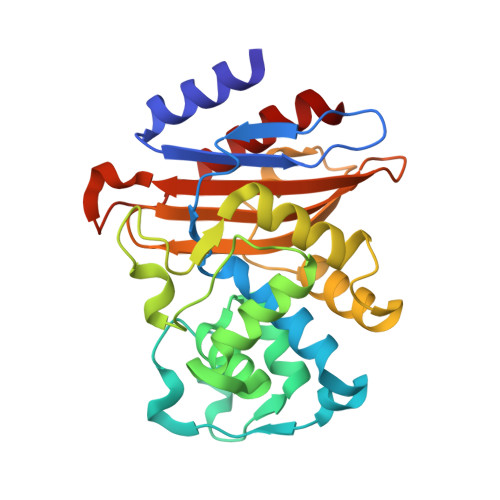Structure of the covalent adduct formed between Mycobacterium tuberculosis beta-lactamase and clavulanate.
Tremblay, L.W., Hugonnet, J.E., Blanchard, J.S.(2008) Biochemistry 47: 5312-5316
- PubMed: 18422342
- DOI: https://doi.org/10.1021/bi8001055
- Primary Citation of Related Structures:
3CG5 - PubMed Abstract:
The intrinsic resistance of Mycobacterium tuberculosis to the beta-lactam class of antibiotics arises from a chromosomally encoded, extended spectrum, class A beta-lactamase, BlaC. Herein, we report the X-ray crystallographic structure of BlaC inhibited with clavulanate at a resolution of 1.7 A with an R-factor value of 0.180 and R-free value of 0.212 for the m/ z +154 clavulanate-derived fragment observed in the active site. Structural evidence reveals the presence of hydrogen bonds to the C1 carbonyl along with a coplanar arrangement of C1, C2, C3, and N4, which favors enolization to generate a trans-alpha,beta-eneamine, stabilizing the +154 adduct from hydrolysis. The irreversible inhibition of BlaC suggests that treatment of M. tuberculosis with a combination of a beta-lactam antibiotic and clavulanate may lead to rapid bactericidal activity.
- Department of Biochemistry, Albert Einstein College of Medicine, 1300 Morris Park AVenue, Bronx, New York 10461, USA.
Organizational Affiliation:


















